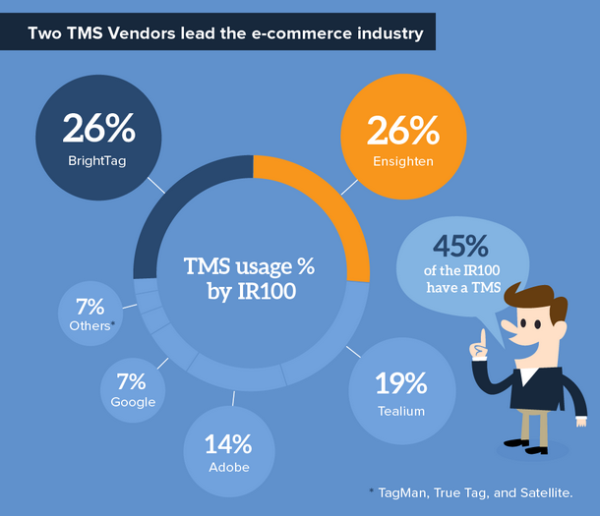Report: Only 45% Of Top 100 Internet Retailers Employ Tag Management Systems
Lima Consulting Group and tag auditing firm ObservePoint audited Internet Retailer’s top 100 companies of 2012 to examine how retailers are deploying tag management systems and determine connections between site load times and site overhead. According to the report, only 45 percent of the sites employed a tag management system. To conduct the audit, nearly […]
 Lima Consulting Group and tag auditing firm ObservePoint audited Internet Retailer’s top 100 companies of 2012 to examine how retailers are deploying tag management systems and determine connections between site load times and site overhead. According to the report, only 45 percent of the sites employed a tag management system.
Lima Consulting Group and tag auditing firm ObservePoint audited Internet Retailer’s top 100 companies of 2012 to examine how retailers are deploying tag management systems and determine connections between site load times and site overhead. According to the report, only 45 percent of the sites employed a tag management system.
To conduct the audit, nearly 48,000 pages of the top 100 Internet Retailer websites were analyzed. Lima and ObservePoint’s data identified four major pain points for the sites: incomplete tag implementations, JavaScript errors, slow load times and high duplication rates.
A staggering 93 percent of the sites had incomplete implementations. Sites not leveraging a tag management system had a 47.6 percent higher rate of duplication and 9 percent more JavaScript errors, while sites with tag management systems garnered 4.54 percent faster load times.

The Lima Consulting Group and ObservePoint audit revealed the largest percentage (33%) of websites employed 9 – 12 tags, while nine percent of the sites had more than 16 tags.

Website owners use tag management systems to manage their site’s tags, similar to how content management systems (CMS) allow marketers to manage website pages. Categorized as an IT solution, tag management systems often are the responsibility of the CMO as marketing departments take on more technology initiatives.
The Lima Group notes:
Researchers forecast that within the next three years, the CMO will spend more on IT than the CIO, but we believe there are a lot of inefficiencies impending their ability to improving their return on marketing technologies.
After reviewing the data, the Lima Consulting Group claimed, “Retailers are leaving money on the table because they are overspending on their analytics solutions. They can’t rely on their digital marketing data if their implementations are faulty or slow.”
The audit discovered that 90 percent of the companies paid for an enterprise level analytics platform, and only 13 used Google Analytics as a primary solution.

Contributing authors are invited to create content for MarTech and are chosen for their expertise and contribution to the martech community. Our contributors work under the oversight of the editorial staff and contributions are checked for quality and relevance to our readers. MarTech is owned by Semrush. Contributor was not asked to make any direct or indirect mentions of Semrush. The opinions they express are their own.
Related stories
New on MarTech